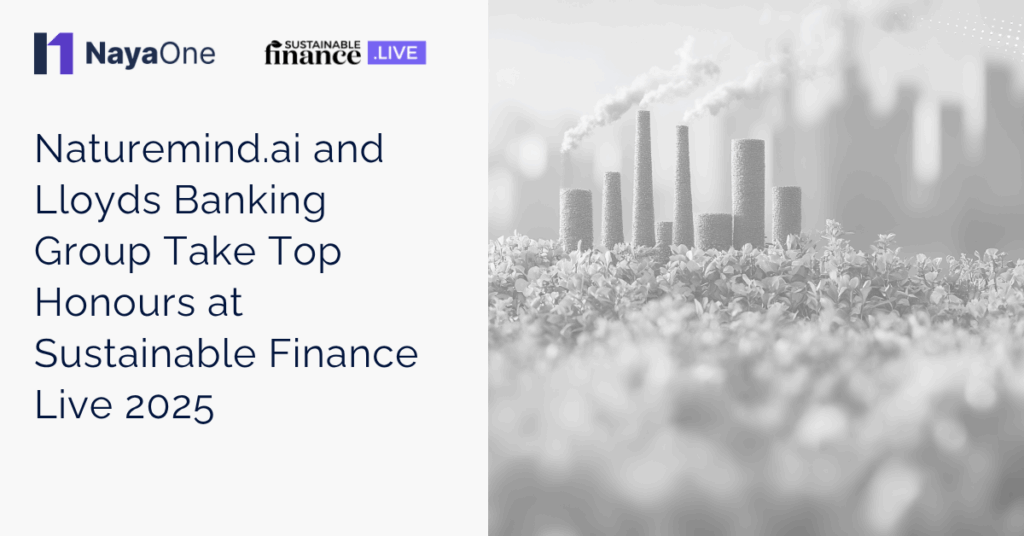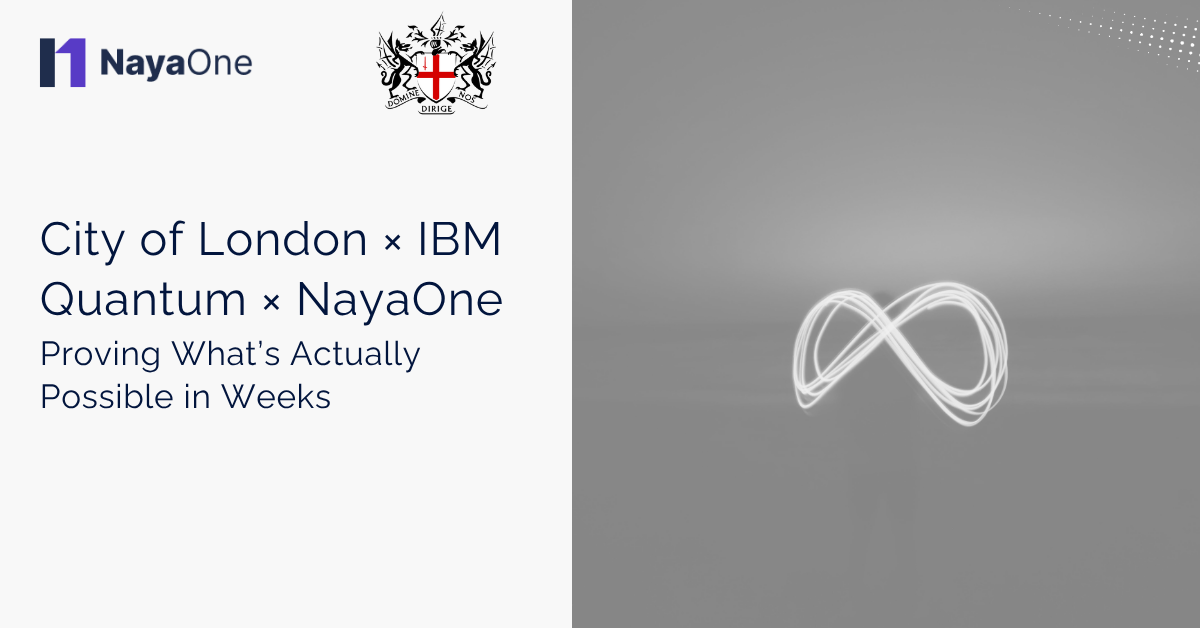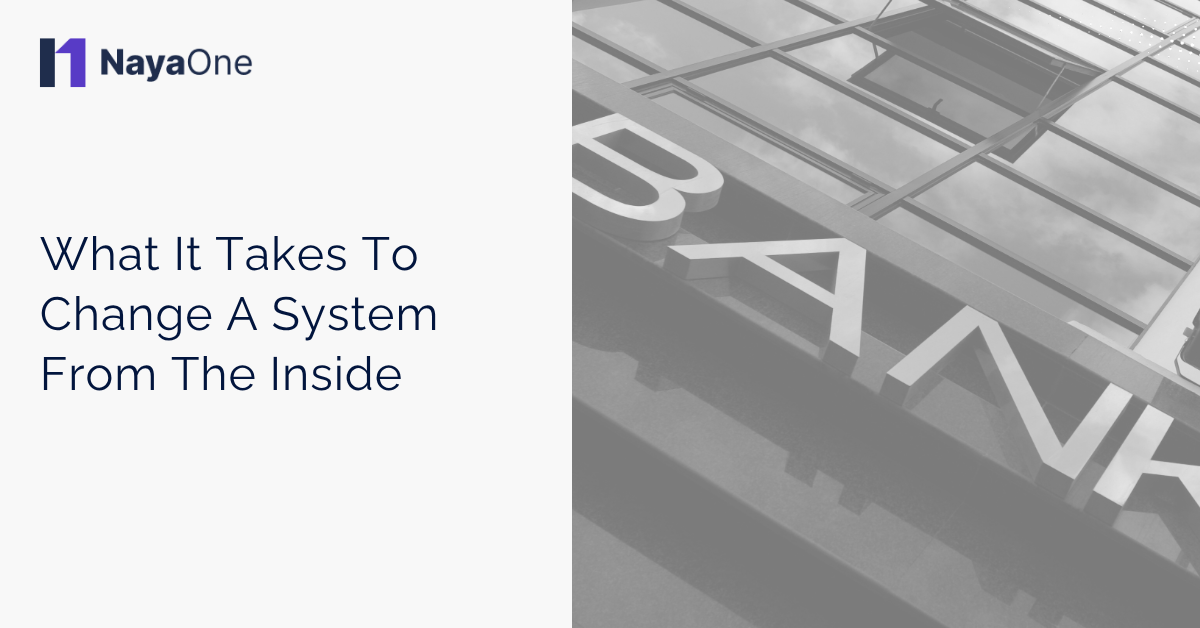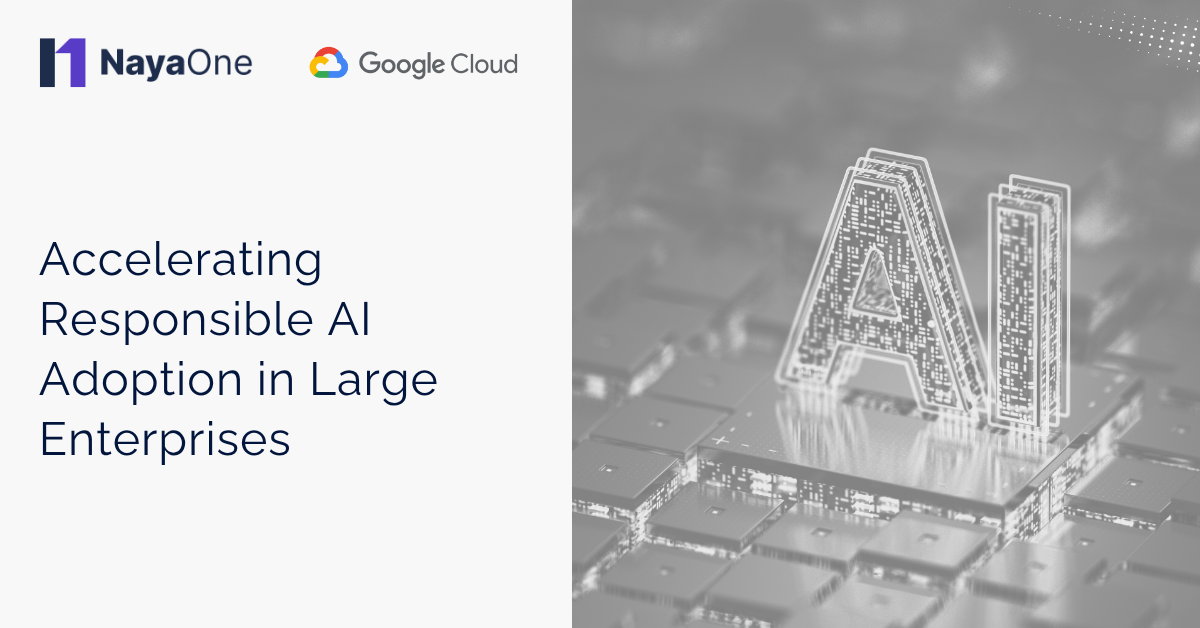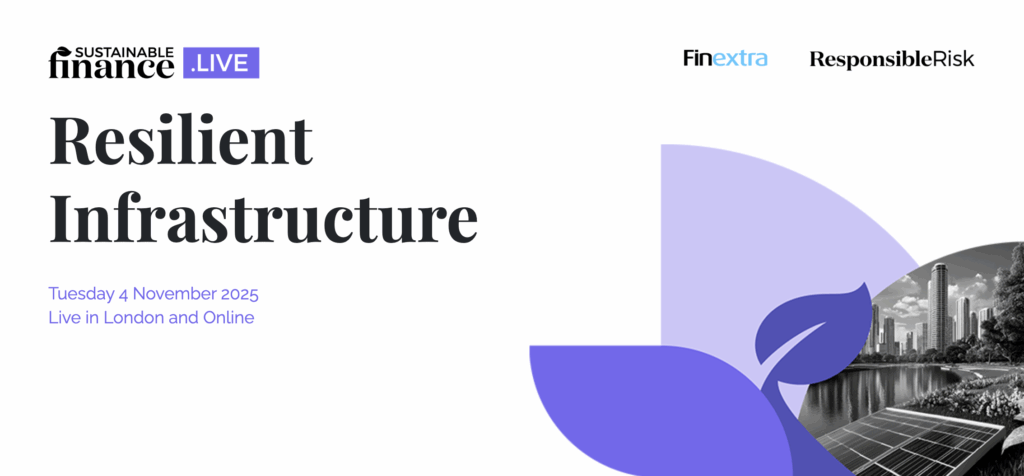
Sustainable Finance Live 2025: Turning Climate Innovation into Evidence-Based Investment
On 4 November, Finextra Research and Responsible Risk hosted Sustainable Finance Live 2025 in London and online, bringing together financial institutions, corporates, engineers, policymakers, and technologists to explore a critical question: How can finance, data, and AI accelerate the delivery of climate-resilient infrastructure?
This year’s theme - resilient systems for a changing world - focused not just on ideas, but on implementation. Across a packed agenda of panels, keynotes, and hackathon sessions, the message was consistent: sustainable finance is becoming a delivery discipline, grounded in measurable data, verifiable models, and collaborative infrastructure.
And at the centre of it all was the Sustainable Finance Live Hackathon, presented in partnership with NayaOne, where 12 teams transformed concepts into working prototypes in a matter of days – supported by NayaOne’s secure platform.
The Hackathon: Where Climate Innovation Meets Financial Delivery
The hackathon served as a practical testbed for sustainable finance. Using NayaOne’s secure, air-gapped sandbox, participants accessed live and synthetic datasets, geospatial data, ESG datasets, API connections, and modelling tools to validate their ideas in real-time.
Teams were asked to build a climate infrastructure planning strategy aligned to one of three problem statements:
Their solutions drew from innovations in pension investments, carbon and biodiversity credits, Earth observation data, geospatial intelligence, open planning datasets, and agentic AI.
The result was a series of prototypes that didn’t just imagine the future of sustainable finance – they demonstrated it with evidence.
Emerging Class: Turning Fragmented Climate Data into Actionable Insights
1. Naturemind.ai - Multi-Agent AI for Climate-Resilience Infrastructure
Winners of the Emerging Class category, Naturemind.ai (Alok Singh, Hassan Aftab Sheikh, Neetu Kushwaha), delivered one of the clearest examples of applied agentic AI in climate modelling.
Their platform addresses the sector’s biggest challenge: fragmented data and complex decision-making. Today, most climate infrastructure relies on historical data, not future projections – leading to asset risk and planning blind spots.
Naturemind.ai’s multi-agent platform integrates geospatial, policy, climate, and financial datasets to generate:
- Flood-risk maps
- Asset-level risk portfolios
- Policy briefs
- Scenario-based recommendations
- Nature-aligned investment insights
In their demo, a simple query like “Assess flood resilience in Oxfordshire” triggered a chain of agents producing TNFD-aligned outputs in seconds.
Sheikh summarised it well: “We built the demo in three to four days… and we’re excited to take this forward with market partners and investors.”
2. Climate Risk Platform for Asset Managers
Aakanksha and Akansh focused on asset managers navigating regulatory uncertainty and inconsistent environmental data. Their platform transformed complex climate data into financially interpretable, audit-ready insights.
Using CMIP6 models, portfolio uploads, scenario modelling, and Monte Carlo simulations, they converted raw climate risk into language that can drive investment committees, governance teams, and regulatory reporting.
3. UK Drought Map for Financial Intelligence
Alper’s UK Drought Map project used 45 years of rainfall data, processed through H3 hexagons, to deliver real-time drought severity scores. The system produced:
Postcode-level drought reports
Exposure indices for insurers
Forward-looking risk indicators for public authorities
It showed how cloud optimisation and open data can be turned into investable climate intelligence.
Established Class: From Sustainable Concepts to Investable Financial Instruments
1. Lloyds Geoagentic Platform for Flood Mitigation Scoring
The Established Class winners, Lloyds Banking Group (Alina Hussain, Andrew Torr, Aritra Chakravarty, Chris Archibald, Nataliya Tkachenko, Yasmin Liverpool, Noel Helliwell, Azahar Machwe), built a standout solution using geospatial agentic AI to quantify the flood-mitigation potential of Environmental Land Management (ELM) schemes.
Their catchment-scale framework used hydrologic datasets to generate:
- Finance-ready climate metrics
- Standardised indices for regulators
- Flood-exposed asset linkages
- Transparent, evidence-based investment scores
The team proposed a Nature Risk Resilience Bond, where investors fund natural assets that reduce flood risk and earn returns based on verified performance. It’s a powerful signal of where sustainable finance is headed: outcomes-based instruments grounded in real data.
As Andrew Torr noted: “We got to use datasets and tools we’ve never had access to before… and we’re going to keep developing this into something deployable.”
2. Agentic AI Marketplace for Resilient Urban Planning
Nick’s team imagined a marketplace where AI agents represent municipalities, developers, and regulators – negotiating compliance, modelling risk, and validating environmental standards with transparent data exchanges.
This reframes planning as a digital, auditable workflow, not a paper-driven bottleneck.
3. Regenerative Investment Districts Using Doughnut Economics
Sue and Diba from the London Doughnut Economy Coalition presented a model for Regenerative Investment Districts, aligning public and private capital with social and ecological metrics. Their live dashboard aggregates open data, community indicators, and financial metrics to measure impact.
By linking doughnut economics with digital procurement and green finance instruments, the framework allows cities to track progress on both sustainability and inclusion.
Emerging Trends: Agentic AI, Data Transparency, and Trust in Sustainable Finance
Across both categories, several clear patterns emerged:
- Agentic AI is moving from concept to practice - systems of autonomous, auditable agents that collaborate to make decisions.
- Data transparency and traceability are becoming preconditions for trust. Many teams built explainability and multilingual accessibility directly into their designs.
- New financial instruments - resilience bonds, nature-linked indices, and ESG APIs - are linking natural capital with financial markets.
- Cross-sector collaboration is no longer optional. Engineers, financiers, and policymakers now build together, not sequentially.
As ResponsibleRisk founder Richard Peers reminded participants:
“Ideas are great, but action is where innovation begins.”
The Role of NayaOne: Providing the Infrastructure for Sustainable Finance Innovation
Behind the scenes, NayaOne provided the infrastructure that enabled every team to move from concept to prototype - securely, collaboratively, and at speed.
Participants used the NayaOne platform to:
- Access climate, geospatial, biodiversity, and ESG datasets
- Run simulations using synthetic and real data
- Test multi-agent systems in an air-gapped environment
- Build digital twins of environmental scenarios
- Validate ideas against regulatory frameworks
- Collaborate across institutions without integration friction
As Karan Jain put it:
“We are proud to provide the platform that enabled teams to turn ideas into solutions. It’s inspiring to see this initiative go from strength to strength each year, driving real progress in data transparency and sustainable finance.”
The same infrastructure now supports enterprises and regulators globally in testing climate-linked investment models, ESG analytics, agentic AI, and sustainable finance frameworks before anything touches production.
Why Sustainable Finance Delivery Matters Now
The conversation around sustainable finance has matured. It’s no longer just about funding green projects - it’s about building systems that prove resilience and transparency from day one.
As extreme weather, nature loss, and regulatory expectations converge, financial institutions must invest in infrastructure that is verifiable, auditable, and adaptive.
That shift - from narrative to evidence - is where the next decade of sustainable finance will be won.
Sustainable Finance Live 2025 proved that when data, AI, and finance work together, resilience becomes bankable.
And when innovation meets a platform built for validation, progress accelerates.
Next Steps
If your organisation is:
- Testing climate-linked investment models
- Building nature-based financial instruments
- Validating ESG or climate-risk analytics
- Exploring multi-agent AI for infrastructure planning
- Or designing sustainable finance frameworks that need evidence behind them
NayaOne’s sandbox gives you the environment to test, validate, and scale solutions safely before production.
Explore how NayaOne can help your team move faster, reduce uncertainty, and deliver sustainable finance outcomes with confidence.
